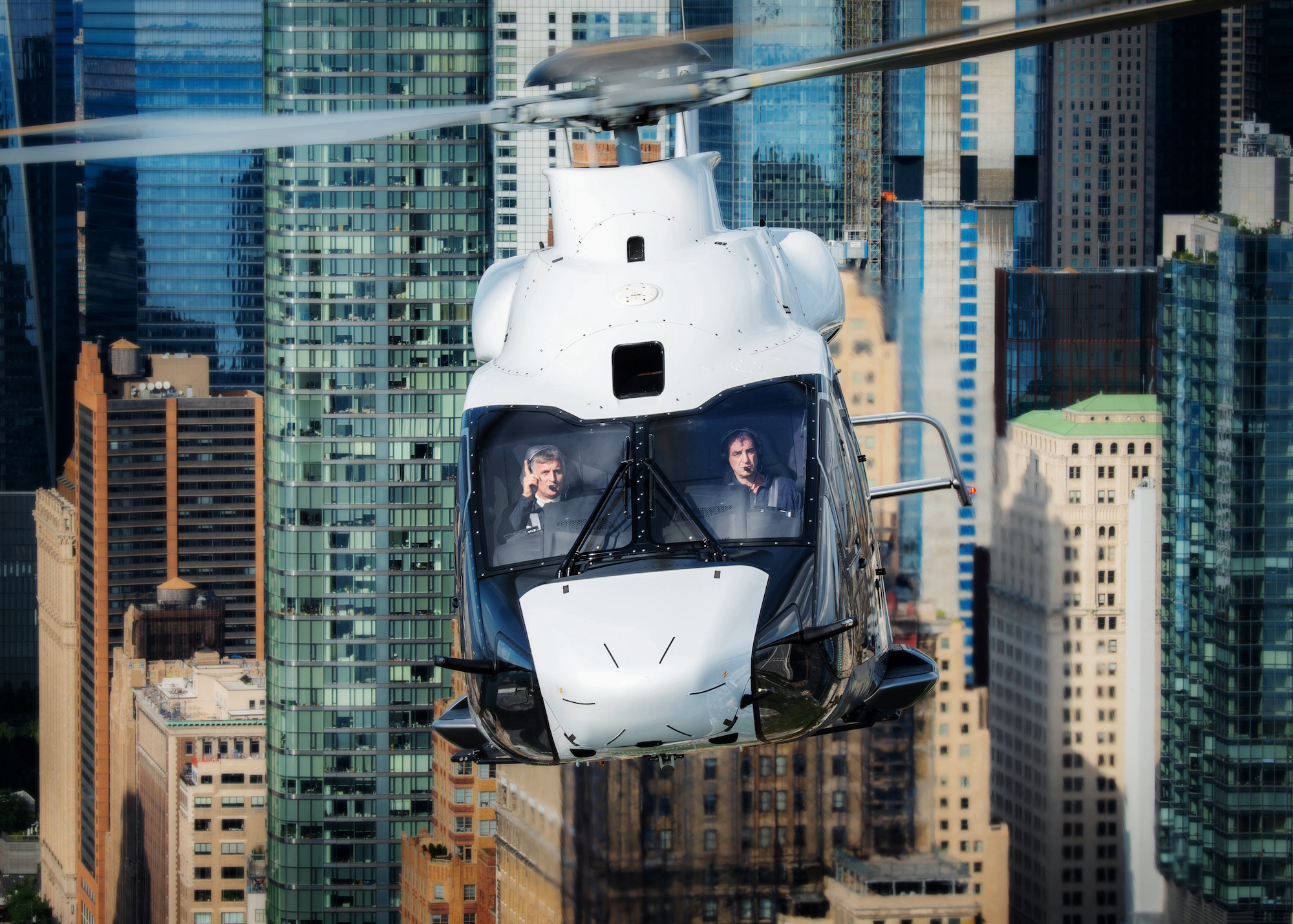

A regular helicopter has two pretty visible main components: the top rotor, for giving the flying machine lift, and the tail rotor, to function as an anti-torque system and keep the aircraft from spinning in circles.
A new aircraft from Airbus Helicopters, the H160, takes the tail rotor and tilts it at an angle of 10 degrees. Why do that? It gives the helicopter “free lift,” says Olivier Gensse, the H160’s test pilot. In other words, since the tail rotor is tilted ever so slightly downwards, in addition to carrying out its main anti-torque function, it also directs some thrust downwards. “It’s one percent” of the helicopter’s total lift, Gensse says. (The H160 is not the only helicopter with a canted tail rotor.)
The tail rotor is also enclosed in something called a Fenestron, which gives it an element of safety, because a tail rotor can be a source of serious danger for those on the ground, especially if it’s not enclosed. To understand where the word Fenestron comes from, consider the French word for “window,” which is fenetre, as well as the word fenestrou, which Airbus points out “is Provençal for ‘little window’” and is what the Fenestron used to be called. The H160 also has a design change to its main rotor blades that makes them quieter.
[Related: The US military’s tiniest drone feels like it flew straight out of a sci-fi film]
This June, the H160 received its FAA type certification, although US pilots still need to finish a formal training process allowing them to fly the aircraft for a US carrier, meaning that the H160 may not be operating here until 2024. The helicopter is already flying in places like Europe, Brazil, and Japan; Airbus first showed it off back in 2015.
Take a closer look at the design features of the helicopter, which Gensse refers to as “the first of the new generation” of Airbus helicopters, below.





